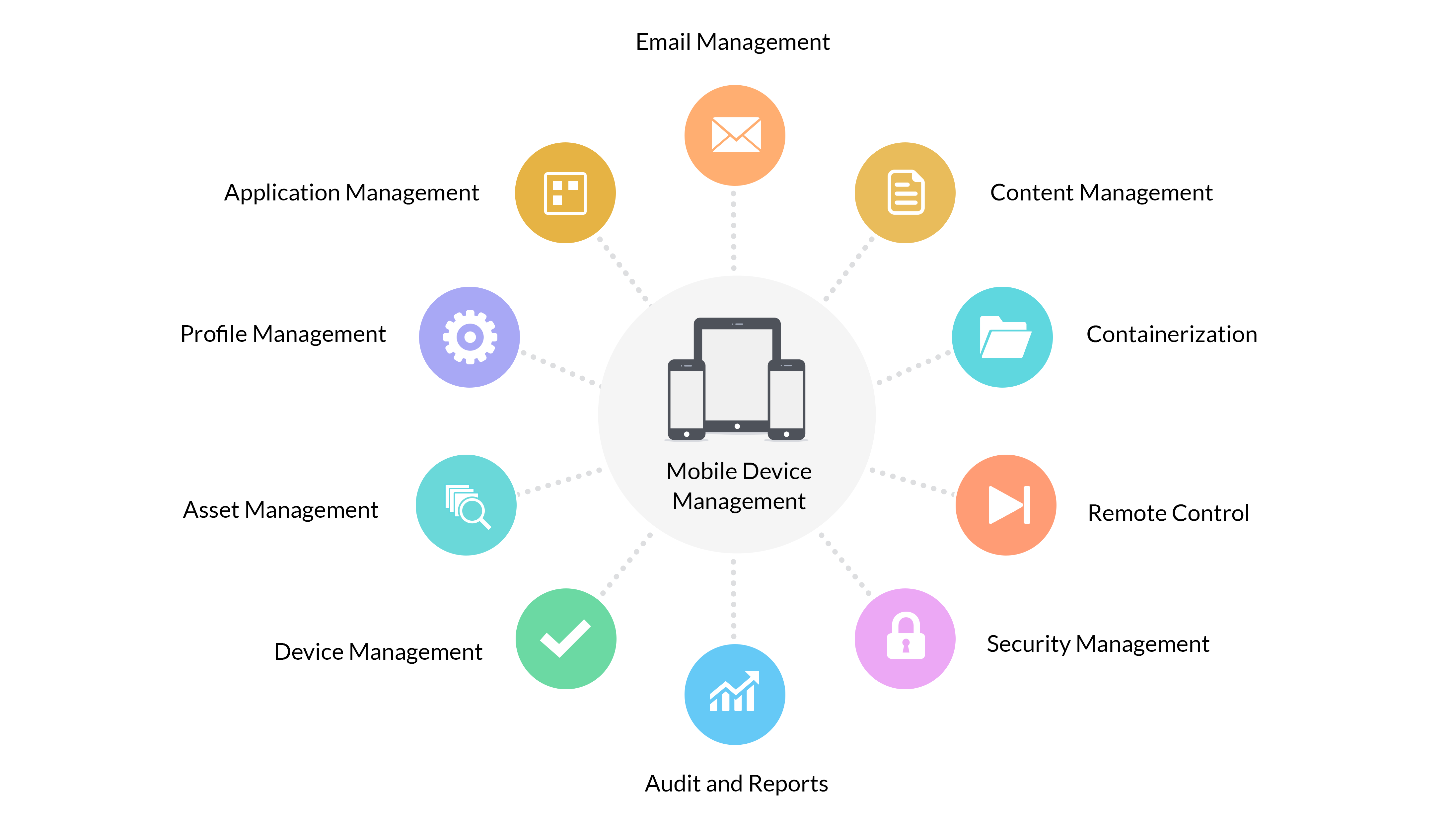With the growing number of mobile devices in the corporate world, you need a way to scrutinize any mobile device that accesses your enterprise's resources. Endpoint Central, our flagship unified endpoint management software, can help you configure and secure your mobile devices from one central location; it's built for simplified desktop and mobile device management.
Endpoint Central's MDM capabilities include the following:
We also offer Mobile Device Manager Plus, a standalone enterprise mobile device management solution that is available on-premises as well as on the cloud. If you're looking for a solution to manage only mobile devices (whether they're corporate-owned or personal devices), try Mobile Device Manager Plus for free.
Endpoint Central's mobile device management features

Device management doesn't end with configuring policies, retrieving asset information, and securing your devices. Application management is just as important as setting up employees' mobile devices.
You can:
Learn more about managing mobile apps.
No two enterprises are the same—enforce stringent policies at various levels to suit your specific security needs.
With the mobile security management feature, you can:
Learn more about securing mobile devices.
Protect corporate resources by configuring and enforcing policies on mobile devices. You can create and configure policies and profiles for different departments or roles.
With the profile and policy management feature, you can:
Learn more about configuring policies on mobile devices.
When employees use mobile devices for work, they need access to corporate resources on their devices. The application allows admins to remotely share documents to employees' devices, all without compromising security.
You can:
Learn more about leveraging mobile content management.
You will be able to securely manage corporate emails through platform containerization and Exchange ActiveSync. With mobile email management, you can configure, secure, and manage corporate email accounts for both enterprise-owned and personal devices.
You can:
To learn more about managing email on mobile devices.
In a BYOD environment, employees can perform work-related tasks with their personal mobile devices. However, BYOD management only works if you can effectively manage these devices and protect your data from being compromised.
The application gives you the ability to set policies and restrictions to keep enterprise data safe. You will be able to containerize in the following ways:
Read our white paper to learn how you can leverage BYOD.
Learn more about BYOD management.
Lock down mobile devices to run a single app or a select set of apps. The application supports lockdown functions for both iOS and Android devices.
You can:
Learn more about implementing kiosk mode on mobile devices.
Tracking and analyzing asset information helps you protect sensitive corporate data. The application provides out-of-the-box reports that allow you to audit devices.
With the reporting capabilities, you can:
Learn more about auditing mobile devices.
Unlike traditional workstations that reside within the physical workspace of an enterprise, mobile devices are used from multiple locations, complicating the process of managing and controlling them.
You can:
Learn more about managing mobile devices.
The application serves as a unified endpoint management solution that works across many device environments, providing necessary security protocols so that unauthorized users can’t gain access to your corporate network. You can enroll devices manually or automatically, enroll devices in bulk, or have users self-enroll their mobile devices.
You are offered:
Learn more about enrolling mobile devices.
Mobile Device Management is a set of practices that involve enrolling, managing, monitoring, updating, securing and troubleshooting mobile devices such as smartphones, tablets, laptops, etc, in both LAN and WAN, from a central location.
Enterprises today own and manage a diverse set of mobile devices, and this has two direct implications:
Hence, to manage devices centrally and to ensure security, system administrators need a Mobile Device Management Solution that caters to all their needs.